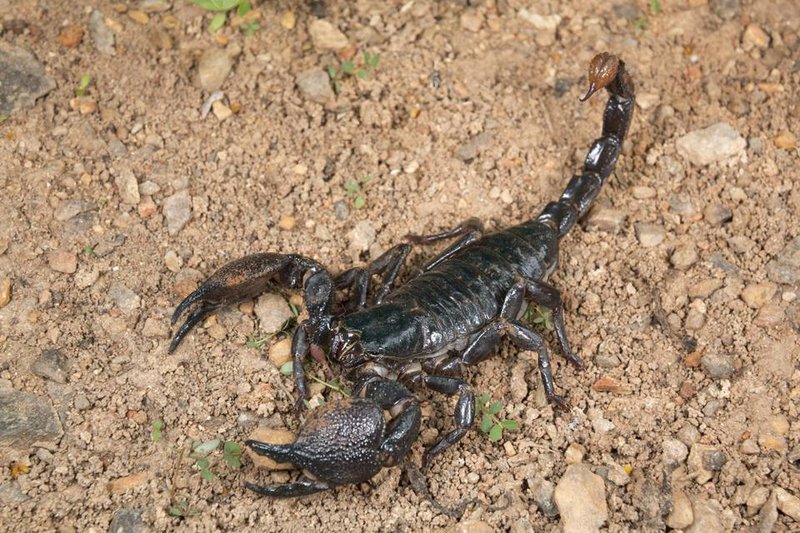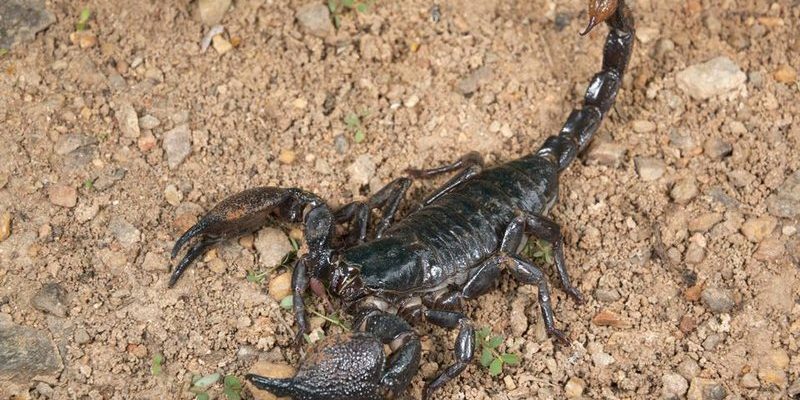
There are many species out there, but some are definitely better suited for life in a glass tank than others. If you’re thinking about getting a scorpion, it’s crucial to know which species thrive in captivity and are safe for beginners. In this article, we’ll explore the top 10 scorpion species commonly kept as pets, helping you figure out which one might be the right fit for you.
The Emperor Scorpion is likely the most popular choice among pet scorpions. These guys can grow up to 8 inches long, and they have a striking appearance with shiny black bodies and large pincers. Just picture a mini tank of a creature that looks like it stepped out of a sci-fi movie! This species is generally docile, which makes it a great option for beginners. However, it’s important to remember that even docile creatures can deliver a sting if provoked, so handling them gently is key.
Emperor scorpions thrive in warm, humid environments—think of them as needing a tropical getaway! A substrate like coconut fiber or a mix of sand and soil will keep them happy. You should also include plenty of hiding spots in their habitat, such as rocks and logs, as they love to burrow and feel secure. Maintaining proper humidity and temperature is crucial—so consider investing in a thermometer and hygrometer if you want to keep your scorpion happy.
Next up is the Asian Forest Scorpion, a close relative of the Emperor Scorpion. It shares a lot of the same traits but has its own unique charm. These scorpions typically reach lengths of 6 to 7 inches and have a similar shiny black appearance. They’re also known for being relatively friendly, making them another good choice for beginners. You might be wondering why you would want a scorpion that grows smaller than the Emperor—well, they’re a fun alternative!
The Asian Forest Scorpion requires a habitat that mimics its natural forest environment. This means providing a substrate that retains moisture and creating a warm, humid space. They enjoy climbing, so including branches or tall decorations can make their home more appealing. Plus, be sure to regularly check the moisture levels; these guys don’t do well in dry conditions.
This scorpion has a reputation for being one of the hardiest species, perfect for those of you just starting out. The Desert Hairy Scorpion can grow up to 6 inches long and has a distinct appearance with its light coloration and hairy body. They come from dry desert regions, so their care requirements differ from the rainforest dwellers. Imagine having a little piece of the desert in your living room!
When it comes to their habitat, you’ll want to replicate the arid environment they’re used to. A dry substrate is essential, along with hiding spots like rocks or caves. Since they’re used to warmer temperatures, keeping their terrarium around 80 to 90°F is ideal. They’re relatively low-maintenance but still require regular feeding with live insects.
The Brazilian Yellow Scorpion is known for its striking yellow color, making it a showstopper in any collection. They’re medium-sized, typically growing up to about 5 inches long. Here’s the catch: they’re more venomous than some other species, so they require a bit more caution. This scorpion is not necessarily ideal for absolute beginners, but if you have some experience, it could be an exciting addition to your pet family.
In terms of care, Brazilian Yellow Scorpions need a warm environment, with temperatures between 75°F and 85°F. You’ll also want to ensure they have plenty of space to burrow and hide. Like their desert cousins, they thrive in drier conditions, which means you need to provide a well-draining substrate and avoid excessive moisture.
The Florida Bark Scorpion is another popular choice for those interested in keeping pet scorpions. These small, agile creatures typically reach lengths of around 3 inches. With their slender bodies and slightly translucent appearance, they might look delicate, but don’t be fooled—they have a feisty nature! They can be a bit skittish, so they may not be the best option if you want to handle your scorpion frequently.
When setting up their habitat, remember that they prefer vertical space. Using a tall terrarium with plenty of climbing surfaces—like branches or vines—will provide them with a comfortable home. The Florida Bark Scorpion also enjoys humid environments, so keeping the substrate moist and the temperature warm (around 80-85°F) is crucial.
If you like colorful critters, the Mexican Redknee Scorpion should catch your eye. With striking red-orange markings, they’re definitely one of the more visually stunning scorpions out there. Typically growing to around 4 to 6 inches, they’re known for being relatively docile, making them a favorite among novice keepers. Plus, their striking appearance will surely impress your friends!
Creating a suitable environment is essential for these beauties. They enjoy a warm habitat, so aim for temperatures of about 75-85°F. Unlike some of their desert-dwelling cousins, they require slightly more humidity, so you’ll want to keep an eye on moisture levels in their substrate. Adding a few decorations for hiding spots is also a good idea, as they appreciate a sense of security.
The Heterometrus Longimanus is often overshadowed by its more famous relatives but is an excellent option for newcomers to scorpion-keeping. These scorpions can grow to about 6 inches and sport long, impressive pincers. You might describe them as the gentle giants of the scorpion world, as they are typically calm and easy to handle—just be mindful not to provoke them!
They thrive in tropical conditions, meaning you’ll want to ensure their habitat is warm and humid. This species appreciates a spacious terrarium filled with places to hide and explore, so consider using substrate that retains moisture. Regular feedings of crickets or roaches will keep them happy and healthy.
While not a true scorpion, the Scorpionfish Scorpion deserves an honorable mention. These creatures are fascinating and can add flair to your collection. Unlike other scorpions, they are not typically kept as pets, but they are interesting to study. They can be found in tropical waters and are known for their colorful camouflage—a predator that blends seamlessly with its environment.
If you’re interested in exploring beyond typical scorpions, researching Scorpionfish can provide insight into another unique aspect of the animal kingdom. They are a reminder that even within the scorpion family, there’s a world of diversity to discover!
The Pandinus Cavimanus, or the giant rainforest scorpion, is another impressive species worth considering. They can grow quite large, often reaching 8 inches or more. Their bulkiness and distinct appearance make them a showstopper. While they may look intimidating, they are generally known for being calm and easy to manage—ideal traits for a first-time scorpion owner.
Caring for these animals involves providing a warm, humid environment similar to their native rainforest habitat. A mixture of peat and soil works well for bedding, offering the ability to burrow. Ensure your scorpion has access to fresh water and keep an eye on humidity levels, aiming for around 70-80%.
Finally, we have the Centruroides vittatus, or the striped bark scorpion. These scorpions are small, usually reaching about 3 to 4 inches in length. With their distinctive yellow and brown stripes, they’re not just visually appealing but are also hardy and adaptable, making them an excellent option for beginners. Plus, they thrive in various environments, from deserts to forests!
Their care is similar to that of the Florida Bark Scorpion, as they appreciate vertical space. Make sure their habitat has adequate hiding spots and enough moisture to keep them comfortable. They enjoy climbing, so consider adding some branches or rocks for them to explore.
So, there you have it! These are the top 10 scorpion species kept as pets. Each one offers its own unique traits and care requirements. Honestly, keeping a scorpion can be a captivating experience, but make sure to do your research and choose a species that suits your level of experience and lifestyle. Whether you go for the bold Emperor Scorpion or the striking Brazilian Yellow, you’re in for an exciting adventure with these fascinating creatures.

